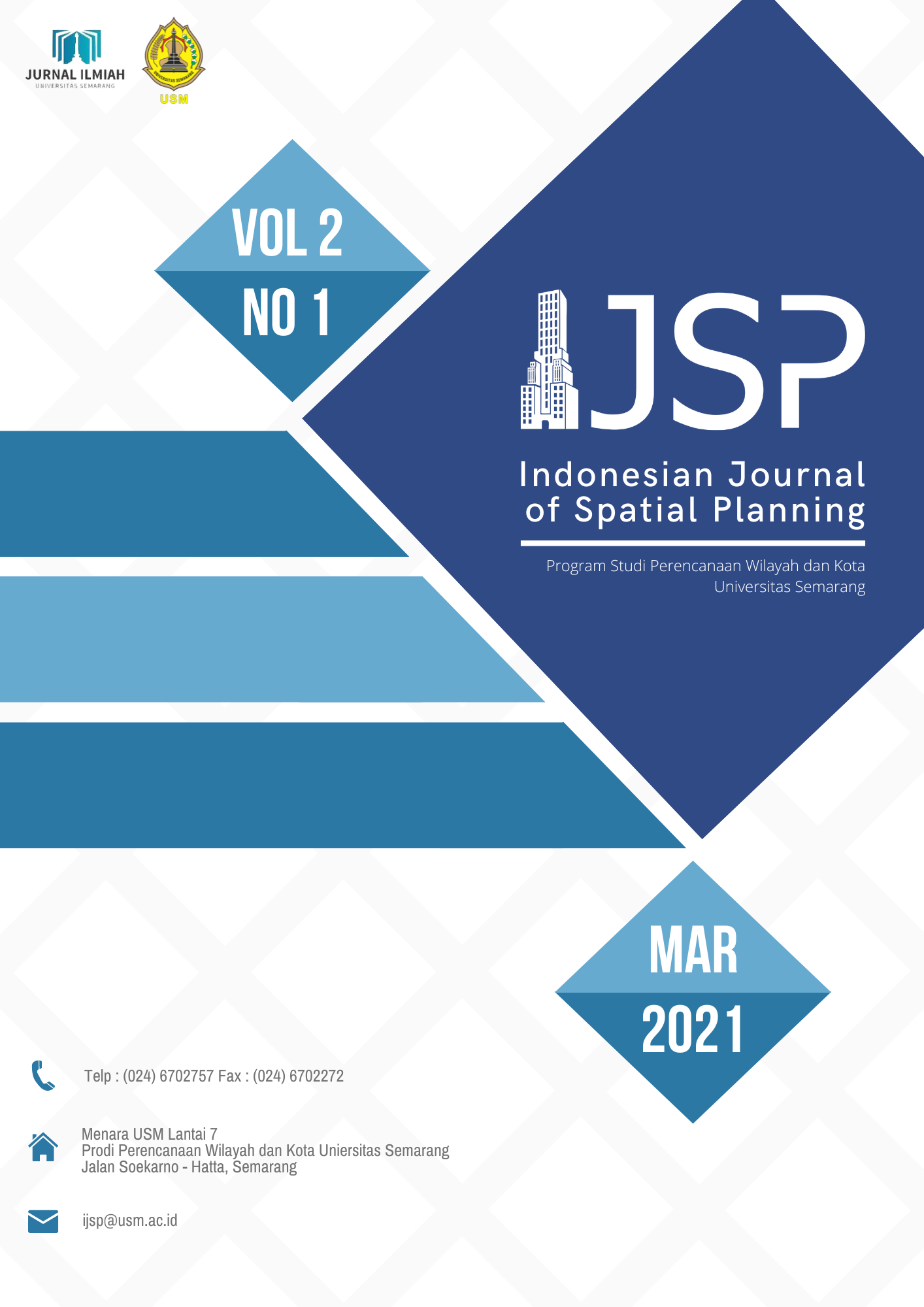INDEKS VEGETASI PADA KAWASAN HUTAN DI KABUPATEN PEKALONGAN
DOI:
https://doi.org/10.26623/ijsp.v2i1.3185Keywords:
Hutan, Monitoring, NDVIAbstract
Pada era saat ini hutan memegang peranan yang penting bagi keseimbagan kehidupan baik dari sisi air, tanah dan udara. Keseimbangan ini tentunya perlu dijaga dan dipertahankan agar berfungsi sebagaimana mestinya. Seiring dengan berkembangnya zaman, monitoring kawasan berkembang dengan sangat cepat, dari yang dulunya harus meninjau lokasi satu per satu namun sekarang dapat menggunakan citra untuk membantu melakukan monitoring pada kawasan hutan. Tujuan dalam penelitian ini adalah mengetahui nilai indeks vegetasi yang ada di kawasan hutan Kabupaten Pekalongan. Dalam penelitian ini akan menggunakan citra Landsat 8 sebagai basis datanya. Metode yang digunakan adalah analisis deskriptif kuantitatif dengan pendekatan GIS berbasis indeks vegetasi (NDVI). Hasil yang didapatkan adalah Indeks vegetasi hutan di Kabupaten Pekalongan berkisar antara + - 0,0503681 sampai 0,579192. Untuk indeks nilai min dan max paling tinggi terdapat di Kecamatan Petungkriyono, sedangkan untuk nilai mean paling tinggi adalah di Kecamatan Karangdadap yaitu dengan nilai 0,420. Secara keseluruhan indeks vegetasi hutan di Kabupaten Pekalongan tergolong dalam kategori baik dengan mayoritas merupakan kelas kerapatan tinggi sebesar 43,41% dan kelas kerapatan sedang sebesar 40,72%.References
Cui, X., Gibbes, C., Southworth, J., & Waylen, P. (2013). Using remote sensing to quantify vegetation change and ecological resilience in a semi-arid system. Land, 2(2), 108-130.
D az-Delgado, R., Lloret, F., Pons, X., & Terradas, J. (2002). Satellite evidence of decreasing resilience in Mediterranean plant communities after recurrent wildfires. Ecology, 83(8), 2293-2303.
Klisch, A., & Atzberger, C. (2016). Operational drought monitoring in Kenya using MODIS NDVI time series. Remote Sensing, 8(4), 267.
Liu, H., & Wang, X. (2019). ASSESSING NDVI SPATIAL PATTERN RELATED TO MANAGEMENT ZONES. APPLIED ECOLOGY AND ENVIRONMENTAL RESEARCH, 17(3), 6269-6285.
Liu, Y., Feng, Y., Zhao, Z., Zhang, Q., & Su, S. (2016). Socioeconomic drivers of forest loss and fragmentation: A comparison between different land use planning schemes and policy implications. Land Use Policy, 54, 58-68.
Pettorelli, N., Laurance, W. F., O'Brien, T. G., Wegmann, M., Nagendra, H., & Turner, W. (2014). Satellite remote sensing for applied ecologists: opportunities and challenges. Journal of Applied Ecology, 51(4), 839-848.
Pettorelli, N., Vik, J. O., Mysterud, A., Gaillard, J.-M., Tucker, C. J., & Stenseth, N. C. (2005). Using the satellite-derived NDVI to assess ecological responses to environmental change. Trends in ecology & evolution, 20(9), 503-510.
Rao, Y., Zhu, X., Chen, J., & Wang, J. (2015). An improved method for producing high spatial-resolution NDVI time series datasets with multi-temporal MODIS NDVI data and Landsat TM/ETM+ images. Remote Sensing, 7(6), 7865-7891.
Yengoh, G. T., Dent, D., Olsson, L., Tengberg, A. E., & Tucker III, C. J. (2015). Use of the Normalized Difference Vegetation Index (NDVI) to assess Land degradation at multiple scales: current status, future trends, and practical considerations: Springer.
Downloads
Published
Issue
Section
License
Authors who publish with this journal agree to the following terms:
Authors retain copyright and grant the journal right of first publication with the work simultaneously licensed under a Creative Commons Attribution 4.0 International License that allows others to share the work with an acknowledgement of the work's authorship and initial publication in this journal.Authors are able to enter into separate, additional contractual arrangements for the non-exclusive distribution of the journal's published version of the work (e.g., post it to an institutional repository or publish it in a book), with an acknowledgement of its initial publication in this journal.
Authors are permitted and encouraged to post their work online (e.g., in institutional repositories or on their website) prior to and during the submission process, as it can lead to productive exchanges, as well as earlier and greater citation of published work (See The Effect of Open Access).

This work is licensed under a Creative Commons Attribution 4.0 International License.

